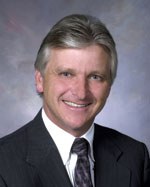 By Jim Phillips, Yarn Market Editor
By Jim Phillips, Yarn Market Editor
For the better part of the last decade, it has been a Yarn Market tradition to use the December column to reflect on the past year and then begin the new year in January with a look at the prospects for the coming 12 months.
For the past few years, this review has focused on the continuously improving conditions for U.S. spinners, which began 2016 with an almost 36-month period of sustained solid — and, sometimes, spectacular — business conditions. But that all came to screeching halt in 2016.
In truth, the writing was on the wall in Q4, 2015, when business began to fall off. No worries, though, according to many spinners at the time, the decline was just a temporary situation as a result of inventory adjustment by customers. Here is what spinners said at the time:
- “Our orders got really sluggish after Christmas. More than anything, I think it was due to an inventory correction.”
- “Ring-spun yarns have been in high demand for a long time. I think a lot of customers held on to their ring-spun positions just so they would have them. Then, after the holidays, they found themselves with a load of inventory.”
- “One day we have orders coming in like normal, and then, the next day, it turns into a trickle, drip, drip, drip. I don’t think this is a long-term deal; I think it is just customers using their yarn inventory. Knitters and weavers tell me they are still running full schedules, so we expect business to return to normal soon.”
As a result, January was expected to be somewhat slower than normal, but spinners said all signs pointed to a recovery in either February or March, followed by normal business conditions for the remainder of the year. As of mid-December, they are still waiting. As the year wore on, other explanations were sought. Spinners thoughts around mid-year were predominantly along these lines:
- ”We really were blind-sided when business began to slow down in January. It wasn’t at all what we expected. Going forward, I think you will see a return to more favorable conditions. But I am not as certain about this as I was in, say, November of last year. I think the worst, barring something totally unexpected, is that we will maintain our present state, which is not good by any means. But it’s not that bad, either.”
- “A lot of the knitters aren’t running full out, as they were for most of last year, so the frequency and volume of orders have decreased substantially. It would be a stretch to say our business is bad, because it isn’t. It just isn’t nearly as good as it has been.”
- “We’re running two-to-three weeks out and we’re keeping the pipeline full, but we don’t see any longevity beyond that time period. Ideally, we would like to have a six-to-eight-week order backlog and run a three-week delivery schedule.”
Ultimately, some spinners lay the blame for the year’s mediocre results on the most tumultuous U.S. Presidential campaign in decades. There was little optimism for either Hillary Clinton or Donald Trump, and many American consumers began taking a “wait-and-see” approach to some expenditures:
- “It’s not unusual to see drop-offs in election years. After the election, depending on who is elected and what the message is, things could change. That is certainly what happened four years ago, and I am optimistic it will happen again.”
- “Maybe it is just uncertainly about the upcoming election. We have been expecting business to pick up every month this year, and it just hasn’t happened so far. We have a few solid weeks and then a few slow weeks. At first, we thought it was an inventory correction and that things would be back to normal by mid-year. Consumer confidence doesn’t seem to be terribly low. Unemployment is low, and new jobs are being created. So maybe everyone is now just taking a wait-and-see attitude. There have been a lot of things in the campaign for President that have made a lot of people — and that goes for both sides.”
Now, however, with the election over, and with the Dec. 19 electoral college affirmation, perhaps things will begin to pick up. “That is certainly our hope,” said one spinner. “Between uncertainty about the election and the strength of the U.S. dollar, we’ve kind of had the deck stacked against us this year. Few of us in the industry, however, believe this is a long-term issue.”
Trade Agreements
The controversial Trans-Pacific Partnership Agreement, signed by the United States earlier in the year, is all but dead. President-elect Trump has made no secret of his disdain for the agreement and it would be a shock if he put it before Congress for a vote.
Even more, Trump has expressed displeasure with NAFTA and wants to renegotiate some aspects of the 20-year-old pact. How this could affect the yarn industry — if, indeed, it happens — is unknown. But, regardless, 2017 seems to be shaping up as an interesting year in multiple areas. For spinners, the great hope is that 2016 will go down in the books as an aberration and that, going forward, it will be a case of business as usual.
December 2016





